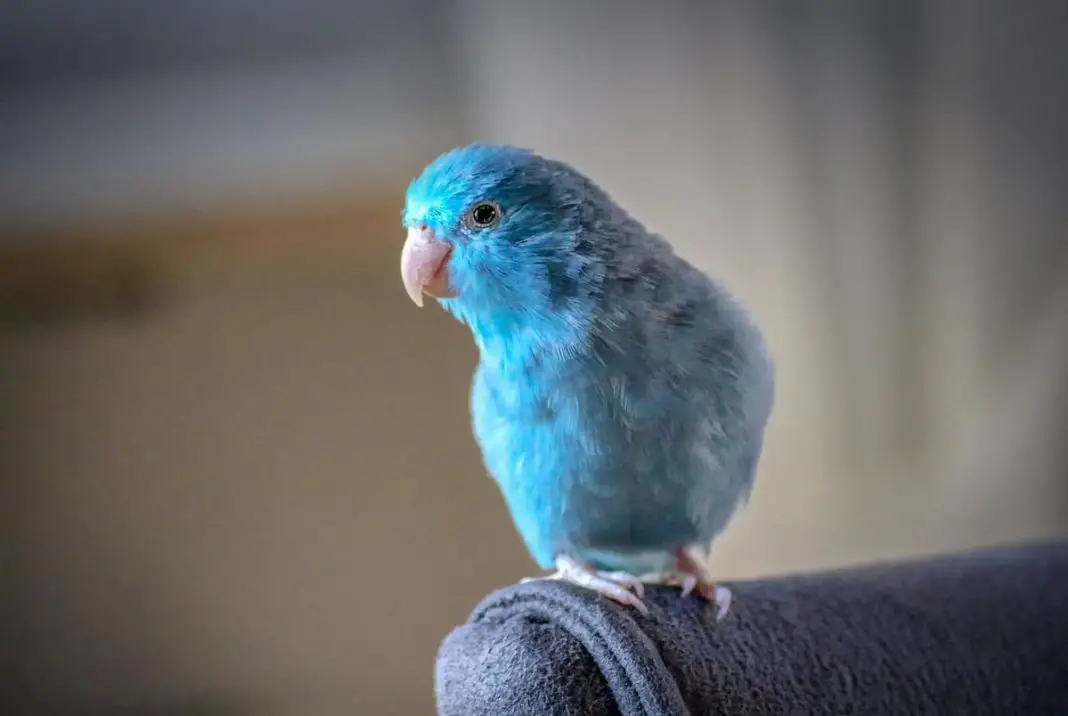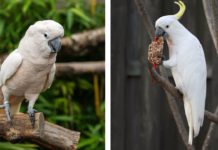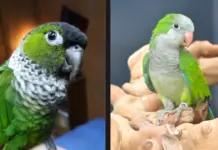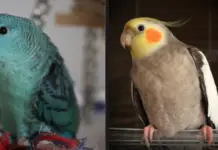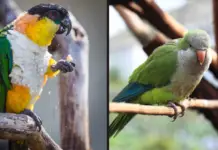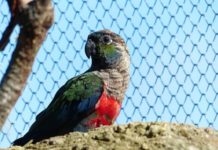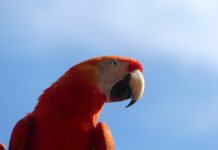Contents
- Handfed Vs Non-Handfed Parrotlets
- The Importance Of Parrotlet Parental Nurturing
- Are There Positives To Hand-rearing A Parrotlet?
- Are Hand Fed Parrotlet Tamer?
- Tips For Hand Feeding A Parrotlet
Handfed Vs Non-Handfed Parrotlets
One of the most recurring debates with parrotlet keepers is the question of whether or not to hand-feed baby parrotlets or let the parent birds raise their chicks. Some parrotlet keepers believe that hand-feeding a young parrotlet will lead to a happier pet bird which is tamer and will have a stronger bond with its owner. On the other hand, parrotlet owners have asserted that allowing parrotlet parents to raise their own young produces a healthier and better-adjusted bird, which later in life will make it a better parent later in life. The truth is that there’s some truth to both of these opinions, and of course, there are exceptions to every rule.
The Importance Of Parrotlet Parental Nurturing
If you ever get the privilege of watching the process in person, you’ll find there’s a lot more going on inside a parrotlet’s nest than just the deposit of food from the adult to the chick. There’re complex interactions between a parrotlet chick and its mother and father, and in most cases among siblings as well. In the wild, parrotlet interactions go even further to include insects in the nest litter, bats hanging from the top of the cavity, and other animals coming and going from the cavity.
The early experiences that parrotlet chicks have, in particular, the relationship they have with their parents and siblings, are likely to be very important to the healthy development and successful fledging of parrotlet chicks. The problem for humans is that someone that wants to hand-rear a parrotlet to mimic complex interactions throughout the day and night won’t do as good a job if it were the parrotlet’s mother.
Are There Positives To Hand-rearing A Parrotlet?
In the case of hand-rearing a parrotlet, there’re, of course, instances when one or both parents, for whatever reason, choose to not rear their chick, or make parenting decisions which could threaten the chicks’ survival. Or in some cases, a parent is unable to care for their young. In cases like this, very often it becomes essential for chicks to be taken out of the nest and hand-fed, or left in the nest and given supplementary feeding. There’s lots of evidence that birds like this if socialized well through fledging and independence, can grow to be happy and healthy parrotlets.
Are Hand Fed Parrotlet Tamer?
Generally, hand-fed parrotlets are considered tamer compared to those being raised by their parents. However, it depends on if the parrotlet was still handled after it was weaned. There are parrotlet breeders that will co-parent parrotlet chicks allowing the parents to feed them, and the breeder will handle the parrotlet chick between feedings.
The important thing is to choose a parrotlet that you can handle at the breeders or pet store. Don’t buy a parrotlet that you can’t already handle as it may never have been tame, or may not have been handled and was allowed to go wild. If you have never had a parrotlet or any other pet bird, you’ll have trouble working with a parrotlet like that. So, when you’re looking for a parrotlet, you should insist on being able to handle it or find another place to buy your parrotlet.
Tips For Hand Feeding A Parrotlet
Before hand-feeding a parrotlet, it’s recommended to get some hands-on training from a breeder or other professional. It’s best to first be quite comfortable with the procedure before starting to hand feed on your own.
Make sure to always wash your hands thoroughly before hand-feeding a parrotlet chick.
For your convenience and best results, use a commercial hand-feeding formula, and follow package instructions. Most commercial hand-feeding formulas include details on the water-to-solid ratio based on the parrotlet’s age. Younger parrotlets require more liquid compared to older parrotlets.
Prepare a fresh batch of hand-feeding formula for each feeding, as bacteria can quickly proliferate. You should never try to save any leftover formula.
Depending on the source, the advised temperature range for formula ranges between 100-108 degrees Fahrenheit for most species. Again, make sure to look at the package directions, a local avian veterinarian or experienced breeder can give you specific advice about this.
It’s important to note that microwaving the formula can cause the mixture to develop “hot spots,” resulting in crop burns. Instead, you should mix and heat the formula in a double-boiler or inside a bowl placed inside a pot of hot water. Keep the feeding dish in a bowl of warm water, which helps to maintain the temperature during feeding sessions.
Stir the formula thoroughly prior to measuring the temperature. Keep the thermometer in the food for continual monitoring. You can confirm that the warmed formula is bird-safe temperature with a drop on the inside of your wrist just as people do with baby bottles.
You can use avian forums and talk to other hand-feeders about the best hand-feeding utensil, as there are different theories as to whether to hand-feed with a spoon, syringe, or feeding tube.
Place the parrotlet on an easy-to-grip surface, such as a towel or dishcloth.
Gently grip the parrotlet’s head from behind, stretching the neck ever so slightly and steadying the lower beak with a finger or thumb.
Touch the lower-left side of the parrotlet’s beak (the parrotlet’s left) with the feeding implement, and angle the tip of the utensil toward the right side of the parrotlet’s throat. The esophagus is located on the parrotlet’s right side (it will be on your left as the parrotlet faces you) and the windpipe runs down the center of the neck. Touching the feeding implement to the beak usually elicits the feeding response, which involves the parrotlet eagerly ‘pumping’ the food down into its crop.
Release the food slowly. Don’t flood the beak. Feeding quantity and frequency depends on the formula, so consult the package directions for specific advice.
Parrotlets that are very young require more frequent feedings. The rapid growth phase in the second and third weeks often requires more food, although be careful not to overfeed the parrotlet.
It’s important to assess the parrotlets’ progress by weighing them before and after feedings. If the young parrotlet starts losing weight, consult a veterinarian immediately. Although some weight loss is normal, during the weaning process, it can be nature’s way of preparing a chubby parrotlet for flight.
Conclusion
There are advantages to both hand-fed and non-hand fed methods of raising a parrotlet, but in general, a parrotlet will always be best raised by their parents.

